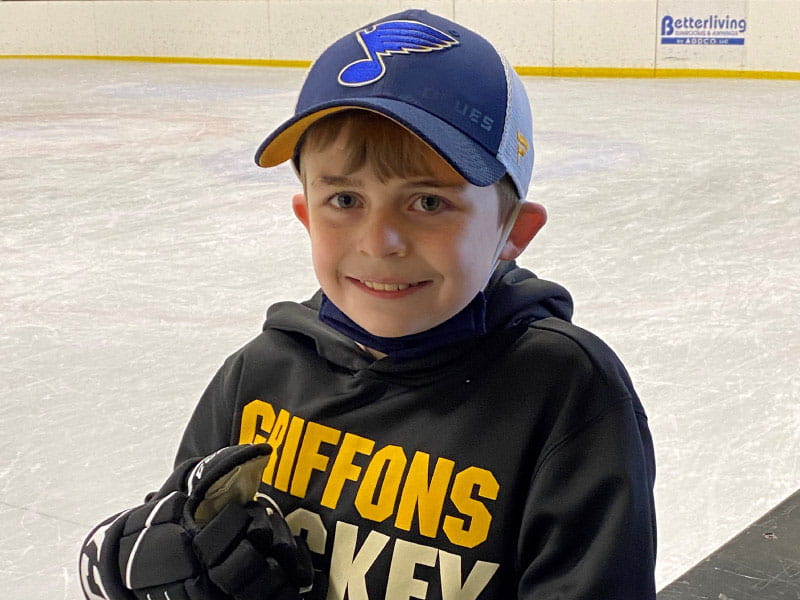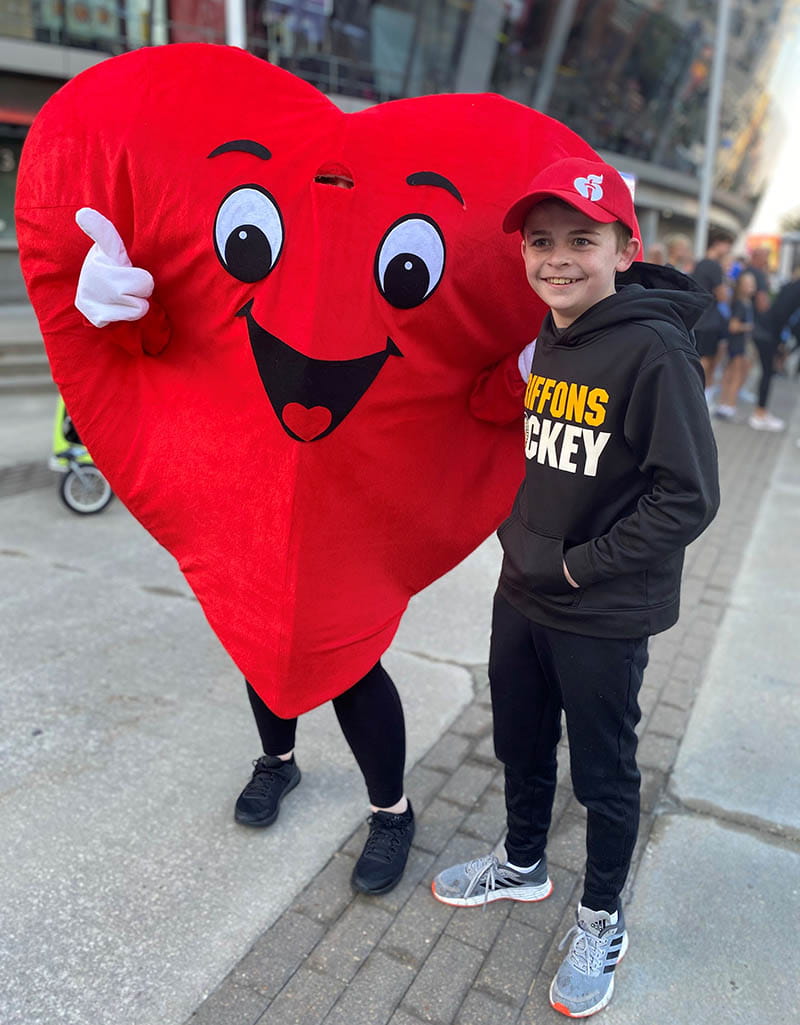For 11-year-old hockey player, breathlessness signaled a struggling heart
By Suzanne Marta, American Heart Association News

Two years after a chance outing with a friend at an ice rink, Jake Burnam had gone from someone who struggled to connect with a sport to a hockey dynamo. He'd skate up to four nights a week.
Jake tried out for his team's "gold" squad. Moving up in caliber meant he needed to be at his best. Yet he wasn't even at his normal level.
"He kept coming up with reasons not to skate and saying he was out of breath," said Rusty Burnam, Jake's dad.
Then, while running laps during physical education class at his school in St. Joseph, Missouri, Jake passed out. He was unconscious for about 30 seconds.
By the time Rusty and Jake's mom, Holly, arrived at the school, Jake was alert and seemed back to normal. Following the advice of the EMTs, they took Jake to his pediatrician. The problem was thought to be dehydration. Rusty and Holly goaded Jake to drink more water, and he returned to his normal skating schedule.
A month later, Jake passed out again. This time, he was unconscious for about 3 minutes.
Jake was taken to the emergency room, where an abnormal electrocardiogram sent him to a children's hospital more than an hour away in Kansas City for more testing.
The next day, Rusty and Holly got the diagnosis: Their then-11-year-old son had hypertrophic cardiomyopathy (HCM), an inherited condition in which his heart muscle became abnormally thick, making it harder to efficiently pump blood.
HCM is the most common genetic heart disease and can manifest at any age. Children or young adults with the condition may have no symptoms, yet be at high risk for sudden cardiac death.
Doctors told the Burnams that Jake's shortness of breath during exercise and two fainting spells were signals his heart was struggling to get enough oxygenated blood to his body.
Jake had experienced shortness of breath while playing baseball months before. At the time, he was diagnosed with exercise-induced asthma. An inhaler seemed to help a little, but the symptoms didn't totally go away. Looking back, Holly realized she'd been too accepting of the diagnosis even when there was evidence something else might be the cause.
"Now when one of my kids complains about something wrong, I ask a lot more questions," she said. "I don't take anything for granted."
Because HCM is often inherited, Jake's diagnosis triggered genetic testing for the entire family. Rusty and Holly were found to have a genetic marker increasing the risk for HCM. The mutation was passed on to Jake but skipped his sister, Brycie.
Jake spent more than a week in the hospital undergoing more testing. Because his condition can lead to a dangerous irregular heart rhythm, he received an implantable cardioverter defibrillator, or ICD. The device shocks his heart if it gets into a dangerous rhythm.
While physical recovery from the ICD implant took a few days, the emotional toll lasted months. Jake grappled with anxiety as he processed his diagnosis and the fact something so scary was wrong with him.
For two months, he rarely attended school.
"I felt weak and unable to function," Jake said. He worried people would treat him differently.
Just as he was easing back into regular attendance, the pandemic hit, sending students home to learn virtually. Still struggling with anxiety, Jake muddled through the end of the year and much of sixth grade.
"He was an all-A kid who loved school prior to his diagnosis," Rusty said. After, however, "he just wasn't motivated."
Back on campus this past spring, Jake jogged up a hill during recess and passed out. A shock from his ICD revived him. Scrambling down the hill to find a teacher triggered the ICD a second time. While the experience was frightening, getting through it without any problems helped Jake come away more confident.
"It was pretty scary, but I was relieved because the defibrillator saved me," he said.
Today, Jake is a thriving 13-year-old in seventh grade. Every six months, a cardiologist and electrophysiologist monitor his condition.

"I'm pretty positive," he said. "I have doctors who know how to treat my heart condition and detect if anything is wrong. Otherwise, I'm just a normal kid."
There are some limits, though.
Jake uses a wearable fitness tracker with a heart monitor to make sure his heart rate doesn't get too high. He still goes ice skating and rollerblading, but he's not yet cleared to play hockey. He started playing golf, and he's discovered a love for music. He plays the clarinet in the school band and the violin at home.
"He's just a changed child," Holly said. "He's just ready to do it all. We can finally let the air out and relax."
Stories From the Heart chronicles the inspiring journeys of heart disease and stroke survivors, caregivers and advocates.
If you have questions or comments about this story, please email editor@heart.org.




